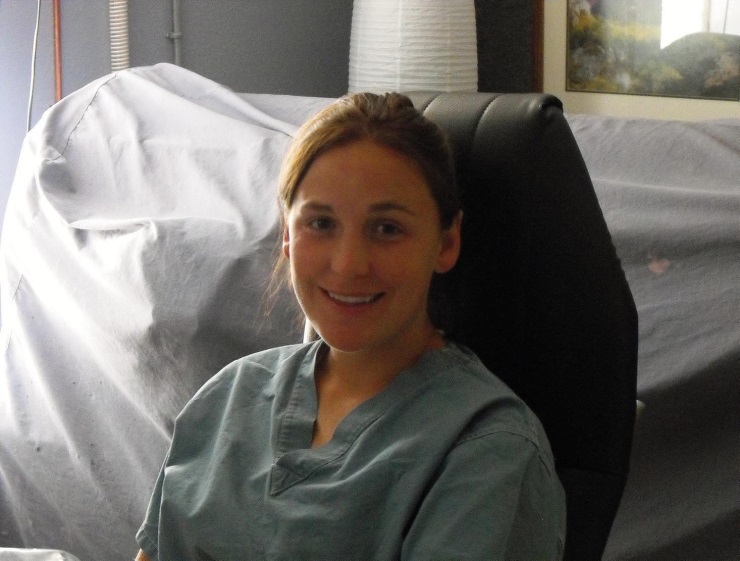
DIVING IN: Margaux in the hospital. "I was a robot and numb before the HBOT treatment with Dr. Harch. But after my first forty treatments, I was able to deal with the terrible memories of what had happened to my best friend, Ashley."
of stairs. It felt like a softball had been inserted inside of my skull. And so I was willing to try anything… that is when I underwent laser surgery at Fort Carson, Colorado, where I would remain for eight months. But it was unsuccessful. The severe headaches continued, and I was medically discharged. Then in 2009, I planned to move to Ohio with my fiancé. Still, before doing that, I had the great fortune to meet a Fort Carson Army representative who assisted wounded warriors like me through the Warriors Transition Unit. Robert B. Alvarez, a Marine Corps veteran, interviewed and processed many wounded warriors like me. He told me he would help me get my life back. I had suffered hard from both the brain injury and the post-traumatic stress, and it was just fate that I ended up in his office. If I had never met him, I would never have gone through hyperbaric oxygen therapy. It was then that Bob Alvarez introduced me to Dr. Paul Harch, the pioneer of HBOT therapy who had his clinic at Southern Louisiana University.”
"I had suffered hard from the brain injury and the PTSD. If I had never met Robert B. Alvarez, I would never have gone through HBOT."
A LUCKY BREAK
In 2009, Margaux became one of Dr. Harch’s first patients and traveled there to receive HBOT treatment. Margaux tells of the experience, “There I took forty dives, and I have to say it was successful. I started feeling better after about twenty of the sessions. However, I was angry. At the same time I was getting treatment, my Ohio psychiatrist had also sent me there with homework. I have always been a faithful-like patient and listened to what a doctor would tell me. I have always tried to do the right thing and didn’t like people being mad at me. Then, during the first part of the treatments, my anger surfaced. I looked at the homework, and it made me so angry. I was so ticked off at her that I ripped up everything I’d brought. All of those emotions started coming out that
I had been hiding. My memories were now resurfacing, and I cried and laughed a lot more."
Dr. Harch had warned Margaux that after a few sessions of hyperbaric chamber dives, while her brain was healing physically, her mind would also experience a rollercoaster of emotions during the final recovery process. She recalls, "When I came back and talked with my psychiatrist, I handed her my torn homework pages. She looked at me and said, 'This isn't you.' With all those terrible emotions coming to the surface, we could figure out together what was going on with my post-traumatic stress situation." When Margaux returned after that session with her psychiatrist, she describes how they began "digging into new stuff. It helped me a lot. Before then, I hated all of my emotions. I was a robot and numb before the HBOT treatment with Dr. Harch. I wouldn't say I liked that I had to go through the treatments all by myself. But after my first forty treatments, I was able to deal with the terrible memories of what had happened to my best friend, Ashley, when she died on March 3, 2007."
In February 2010, after Margaux completed her forty dives with Dr. Harch, they determined that her TBI and PTSD were more serious than the mild TBI first diagnosed. This would require many more chamber hours, which she found in Colorado after she returned to live near her father. In August 2010, Ryan and Eddie learned of her unique story and offered to treat her at the Rocky Mountain Hyperbaric Institute “for as long as it takes to heal you.” So, another forty chamber hours were scheduled over the next few months. Margaux continued to return for additional “maintenance” treatments for several years after that (achieving a total of 140 HBOT chamber hours between both facilities). Today Margaux knows she can finally cope with her TBI and its related PTSD. She still volunteers to raise funds for the Rocky Mountain clinic.